Cedar pine: description, planting and comparison with cedar
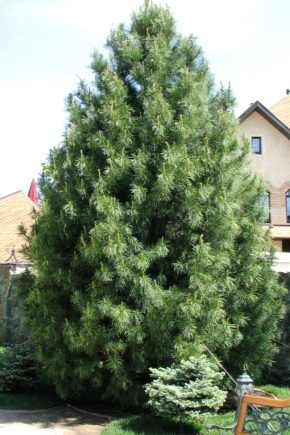
Cedar pine is a unique plant that adorns the forests and landscapes of our country and other territories. It has beneficial for the environment and healing properties for the body. Outwardly, this is a powerful, luxurious plant, stately, tall. Its wood, pine needles, nuts are highly valued. Many people call cedar pine cedar, but there are fundamental differences between them.
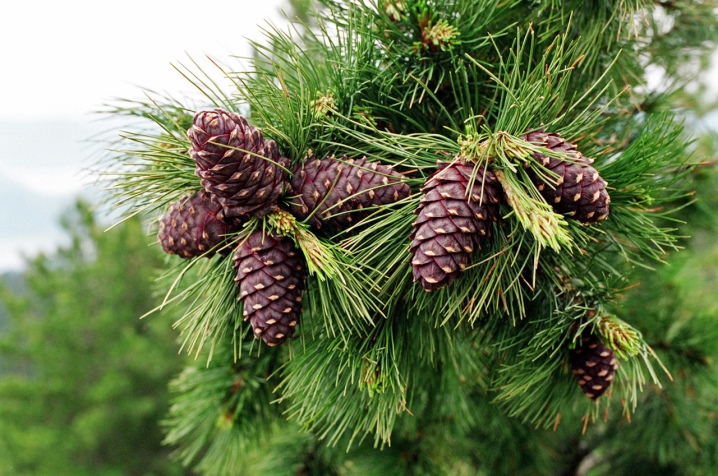
Description
The informal group of cedar pines brings together several tree species. In our country, the Siberian pine is considered the most common. Siberian cedar pine is considered a symbolic plant for Russia, it is impossible not to admire its beauty and healing properties. This tree feels great in any frost. This coniferous plant is surprisingly organic. In height, it quietly grows up to 35 meters, and in girth - from one and a half to two. The pine tree does not grow quickly, but it lives for a long time. On average, the duration of the active healthy existence of a pine is about 400 years. There are specimens that live up to 800-900 years. Pine needles release a huge amount of phytoncides into the air, so breathing in such an area is good for your health.
Air in any type of pine forest has the following properties:
- sterility;
- healing;
- powerful resistance to viruses;
- perfectly affects not only the health of the body, but also the state of the nervous system, soothing it.
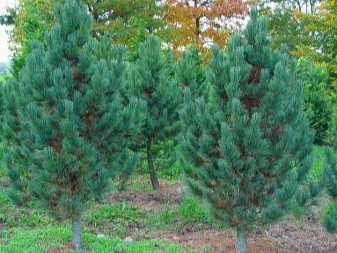
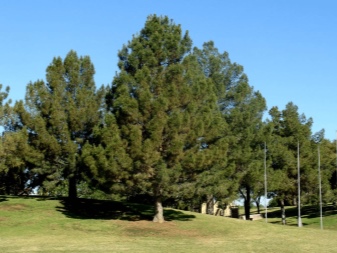
Cedar pine is used for the treatment of scurvy, neurosis, strengthening the immune system. Pine has a wound healing effect, wood actively fights bacteria. As for the nuts, in addition to their delicious taste, they are extremely nutritious and healthy.
Cedar pine looks impressive. Description of her appearance and properties:
- branches grow compactly and densely, forming an elegant crown;
- the needles are narrowish and hard to the touch;
- the length of the needles is up to 13 cm, has excellent medicinal properties, is full of minerals, vitamins;
- the needles have a dark green tint, with a bluish blotch, soft to the touch;
- the needles are formed in bunches;
- thickened branches;
- straight trunk, gray-brown color;
- the root system is powerful;
- rod-type root with lateral branches;
- the growing season is short - up to one and a half months;
- this is a dioecious monoecious species, cones of both sexes are located on the same tree;
- pollinated by wind;
- the kidneys are cone-shaped, up to 10 mm long;
- flowering and pollination occurs in June;
- cones are large, egg-shaped, at first they have a purple tint, then brownish;
- the width of the cone is from 5 to 8 cm, the length is up to 13 cm, with dense scales;
- buds begin to bear fruit after 60 years, not earlier;
- ripening of cones lasts up to 15 months, after which they fall off on their own;
- the tree blooms and seeds abundantly every 3-10 years;
- cones contain on average from 30 to 150 nuts, the mass of 100 pieces is 25 g.
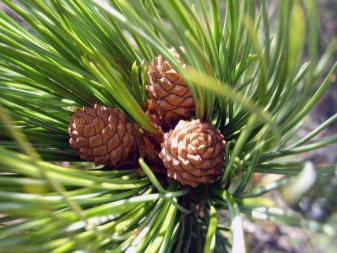
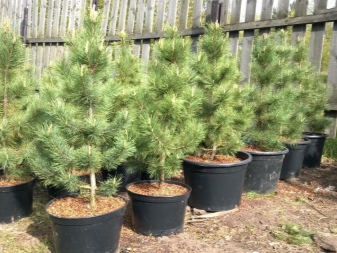
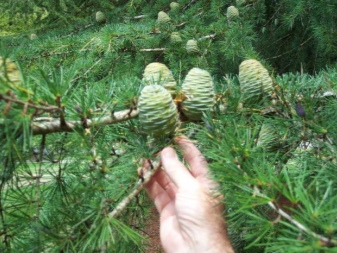
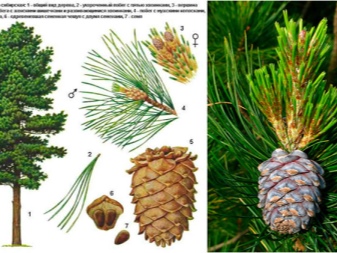
Spreading
Cedar pine (mainly Korean and Siberian varieties) grows in the natural environment of Russia in different regions of the Siberian District, in Primorye, Khabarovsk Territory. It takes root well in all latitudes with a temperate climate, therefore, cedar pine is actively grown by gardeners from different regions.Pines are successfully planted in the Moscow region, the central regions of the country, in the Leningrad region, in the Altai and the Urals. This tree grows even in the Arctic.
If the plant is planted on soil with good fertility, actively fed, cultivated, then fruiting begins much earlier, about 3 times. For example, in nature, pine does not bear fruit before 40 years, with an intensity of once every 7 years. In the conditions of cultivation in gardens, this happens after 15 years with an intensity of once every 2.5 years. Dwarf cedar grows in the Primorsky Territory, Sakhalin, Siberia, Mongolia. The European pine is regionally distributed in the south of France, in the Alps, Switzerland, and the Carpathians.
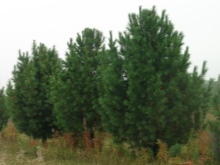
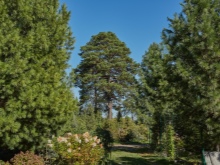

Comparison with cedar
Cedar and cedar pine are often confused, despite all the differences. First of all, three species of Cedrus (cedars) grow in their natural environment: Atlas, Lebanese and Himalayan. Both of these trees are tall, large and classified as evergreen. But cedar grows in a subtropical climate.
The main difference with pine is that cedar cannot grow in the middle lane. Cedar wood is more valuable. Pinus (cedar pine) belongs to the pine family, not cedar. Outwardly, it differs from cedar in the formation of needles - bundle-like, in each bundle of 5 needles. Cedar needles are formed differently - the bunches are denser, at least 30 needles.
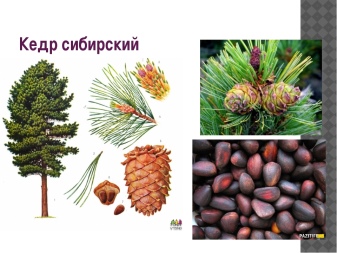

Overview of species and varieties
In the nature of Russia, the Siberian species of cedar pine is widespread. There are several other varieties of cedar pine in nature:
- Korean
- European;
- elfin - more like a shrub tree with a multi-peaked crown.
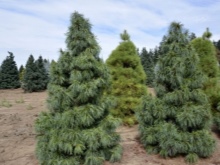
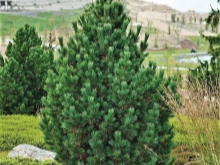
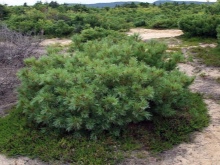
The Korean species Pinus koraiensis is also called Manchu, Far Eastern. This ephedra grows up to 50 meters in height and up to 2 meters in diameter. Very resistant to winds, loves light and fertile soil types. Stagnation of water for them is a problem, it affects the development negatively. There are several varieties and varieties of Korean. Let's list the most common ones.
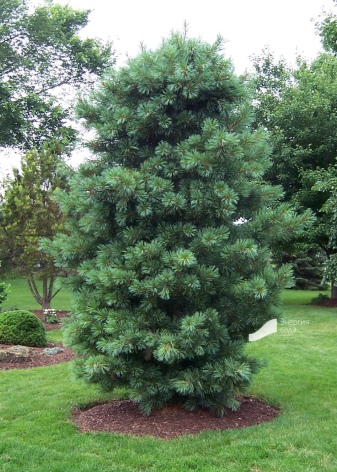

Sulange Korean
This variety grows up to 40 m, has green needles with a bluish tint. The bark is of good density, openwork type. Fruiting begins in about 15 years. It takes root well in an urban environment with its unclean air. It is often used to decorate parks and squares.
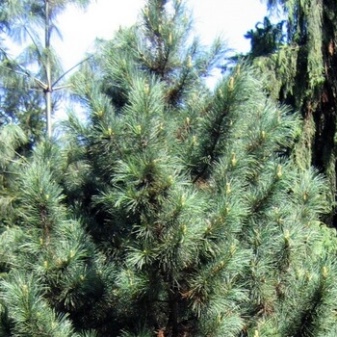

Pine "Silvery"
It belongs to the decorative varieties. Has a crown like a pyramid, long curved needles. The color of the needles is blue with a silvery sheen. Already at 10 years old, the tree reaches a height of 2.5 meters and 1.2 meters in diameter. It tolerates cold well, but requires soil fertility, stagnant water leads to damage and disease. In the late 70s, this variety was separated into a separate one, before this period it was combined with glauca.

Morris Blue
The variety bred by Pennsylvania breeders is frost-resistant. It has a dense bark, blue needles with a silvery sheen. It grows up to 20 cm per year, maximum height 350 cm, crown diameter up to 1.8 m. In cities, it grows inactive, whimsical to the purity of the air and the sun, stagnant water does not tolerate well. The maximum lifespan is 120 years.
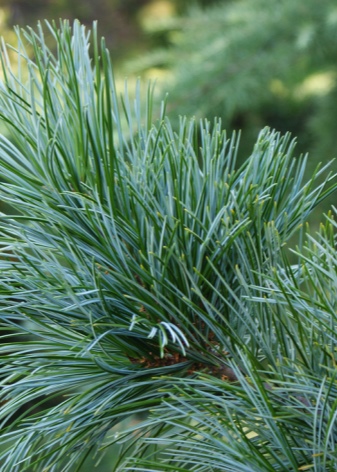

The European cedar pine in Russia is most often represented by the Pinus cembra Glauca Compacta variety. This variety was developed in the Netherlands.
It is a dwarf pine of a slow-growing type with bluish needles. It grows well in urban conditions, in its natural environment it can be seen in mountainous areas at least 1300 meters above sea level. Glauka grows to a maximum of 2.5 meters, with a diameter of about 1 meter. Lives for a very long time - up to 1000 years.
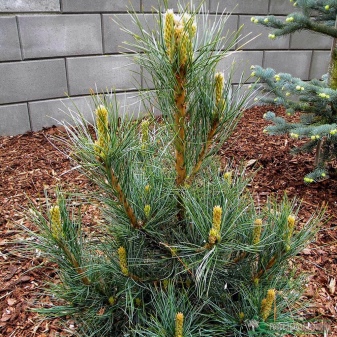
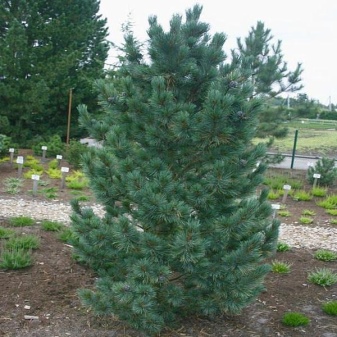
Landing features
Cedar pine can be planted by growing from seeds. Three months are allotted for stratification, the seeds are disinfected with diluted potassium permanganate. This guarantees a greater resistance to diseases of the future seedling. The second method is planting a seedling, it is more comfortable. It is best to plant a five-year-old grafted seedling. Its maximum growth should be 1 meter, trunk diameter up to 2 cm.The vulnerability of pine seedlings is great, so planting requires accuracy.
Buy a seedling with a large earthy clod or in a container, their root system dries out very quickly. Pine is planted in the spring, after selecting the optimal place:
- it should be well lit, with age the tree more and more needs sunlight;
- areas with high gas content are not suitable for many varieties and types of pine;
- if the soil is clayey, drainage is necessary;
- lime will help reduce acidity.
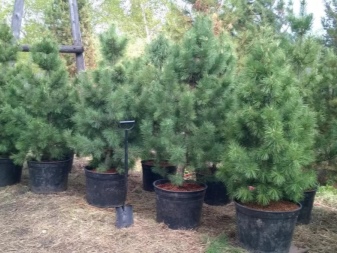
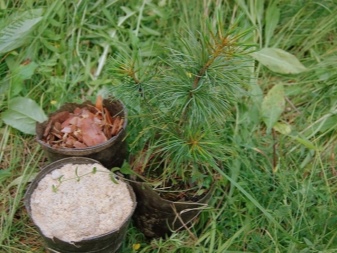
Disembarkation algorithm:
- it is necessary to ensure the weeding of the territory;
- form a hole, focusing on the size of the earthen coma at the roots, it should be 2 times deeper;
- place drainage (gravel, corks, ceramic shards);
- place the tree in a hole, enter soil with peat or humus;
- rhizomes should be carefully untangled before planting;
- it is necessary to moisten the soil abundantly after planting, about 5 liters of water will be required;
- you will need a stake to which you can tie a seedling;
- between cedar pines must not be less than 6 meters.
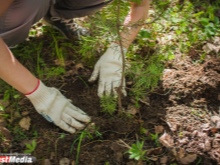
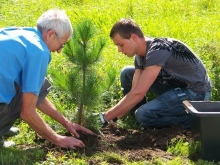
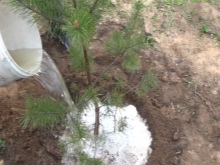
Care Tips
You can accelerate the growth of pine in the garden by providing it with good feeding and proper care. You need to take care of the tree, carrying out all the standard procedures:
- loosening;
- weeding;
- moisturizing;
- fertilizer.
Feeding must be done with organic means, for example, a diluted mullein. In the autumn, it is good to feed the plant with minerals. A nearby lupine plant stimulates tree growth well.
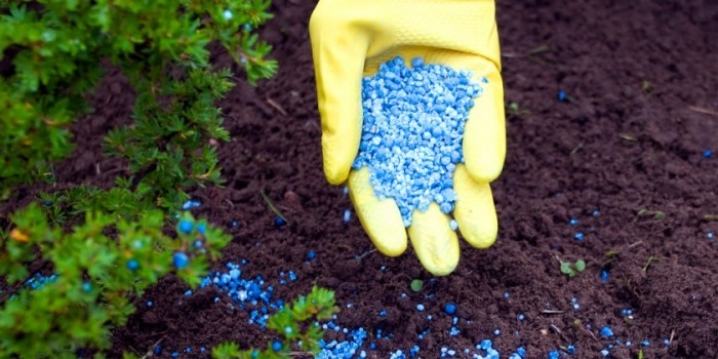
Humidification should only be done as needed. In the summer period, more often, in all other seasons, the level of soil aridity is preliminarily checked. Excessive moisture negatively affects the development of the pine, the root system begins to rot. Loosening is carried out as carefully as possible, since the roots are close. Another mandatory process is mulching, so the soil will be more breathable and moisture-retaining. You can use needles, humus, sawdust.
The formation of the crown is very important for the beautiful growth of the pine. The garden form of the plant has a spreading appearance with several peaks. For the first decade, the lower branches are cut no more than 2.5 meters from the ground.
The cut must be processed with garden var. Any pruning is carried out in the winter and early spring period.
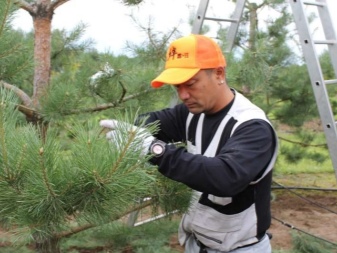
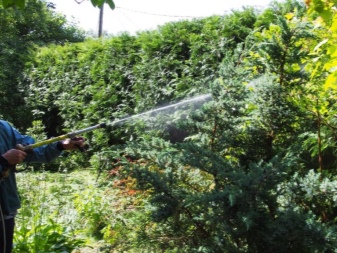
Reproduction
Reproduction methods of this plant there are two:
- vegetative - when a stalk is grafted;
- seed, that is, nuts from cones.
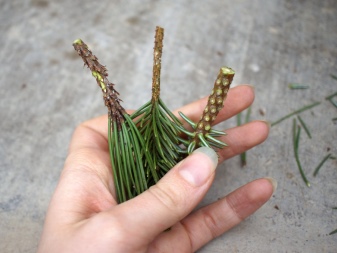
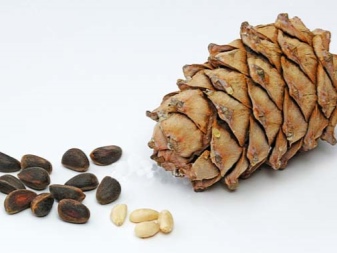
The seed method is the most fun and common. The main thing is that the nuts are varietal, of high quality. If you decide to use ordinary nuts from purchased cones as seeds, you need to increase the amount of planting material, since it is not known how many of them will sprout.
Pine is sown in mid-spring - until early May. Stratification, that is, forced cooling, is required. This process perfectly stimulates the embryos to grow. Without this event, the seeds will sprout in a year at best, if they do not rot. After that, the seeds must be filled with water at a temperature of about + 45 ° C and maintained for three days. Next, the nuts are combined with wet sand or peat chips in a ratio of 1 to 3. There should not be too much moisture - this is an important point, which should form in the hand and keep its shape.
The mixture is introduced into a container made of plywood with holes, layer height no more than 20 cm. There must be air access to the holes, therefore, the container is installed at a height in a cold room of no more than + 6 ° C. This mixture must be kneaded and watered twice a month. Subzero temperatures are unacceptable. After the sprouts hatch, they are planted in open ground and protected from birds, bad weather with boxes or products from rods. After a month, they can be removed, the forming seedlings are already quite strong for independent growth.
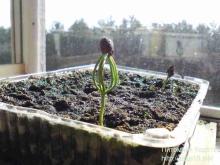
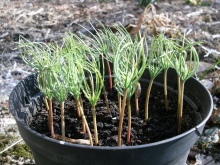
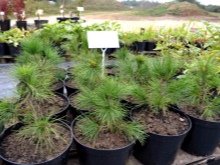
Diseases and pests
Most often, diseases of this tree have a fungal cause. Young trees can become infected with soil fungi and die. Fungi can cause tracheomycotic wilting, when the roots turn brown, nutrients cease to flow through the vessels into the trunk. Treatment of fungal diseases is difficult, most often unpromising. Here, indeed, the real remedy is prevention:
- high-quality planting material;
- timely treatment with fungicides, preparations containing copper.
If the needles are affected, they must be removed from the site. If the disease is at an early stage, injections into the trunk can be tried. However, there is no guarantee that you have correctly identified the stage of the disease. Early diagnosis is very difficult.
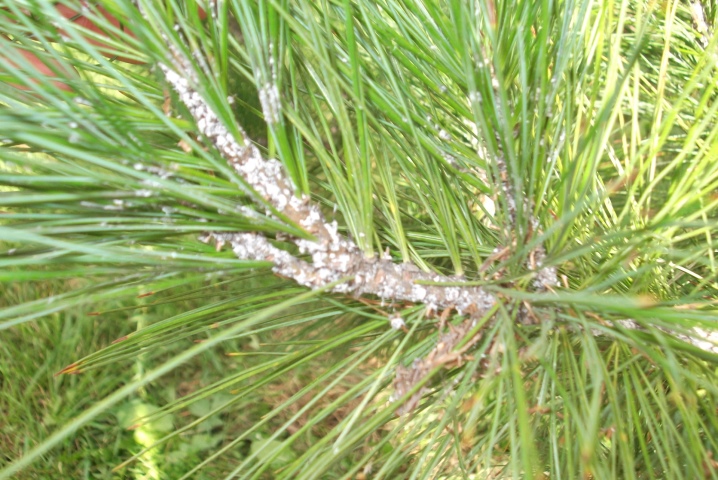
A serious disease caused by the hermes insect is very common in pine. White bloom on the needles will help to determine it. It is necessary to treat the tree with insecticides or the hot / cold fog method, but here you need a technique, this procedure is difficult to carry out on your own.
Pines are often affected by pine cone rust. Symptoms:
- curvature of the trunk;
- dying off of the tops;
- opening and drying of cones.
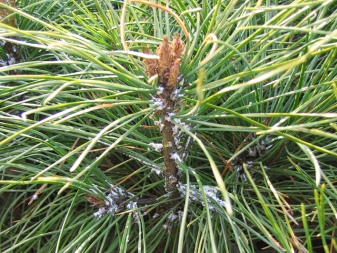
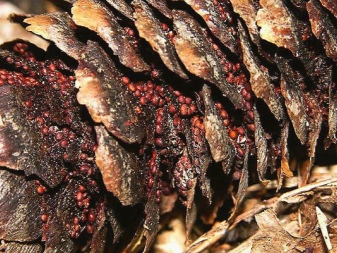
This disease can mow down a huge number of young animals, therefore, preventive measures in the form of fungicide treatment should be constant.
Use in landscape design
The plant is very beautiful it is often used in landscape design:
- cedar pine looks spectacular in the vicinity of various conifers;

- surrounded by lawn and flower beds, pine can be the central figure of the composition;
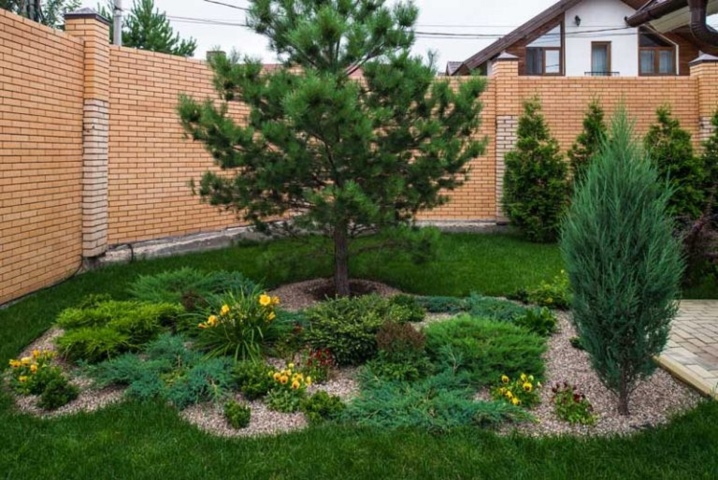
- even in splendid isolation, this tree looks luxurious and monumental;

- dwarf cedar due to its short stature will successfully fit into any concept;
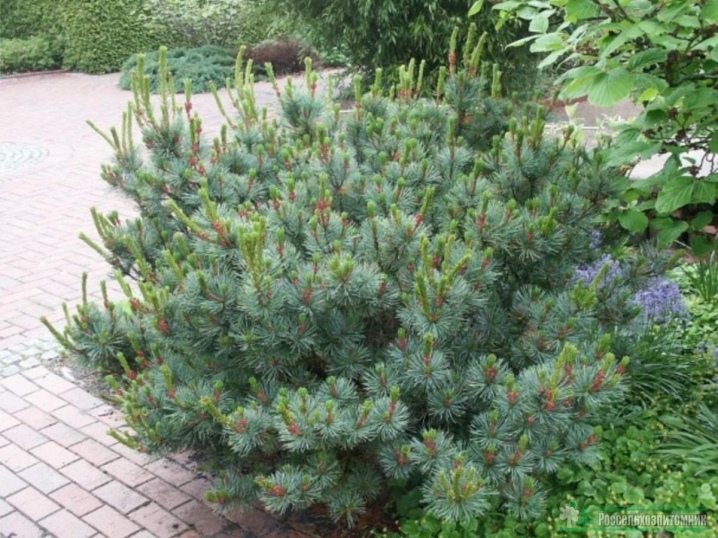
- varietal variety of cedar pines allows you to choose a specimen suitable for the climate and landscape;
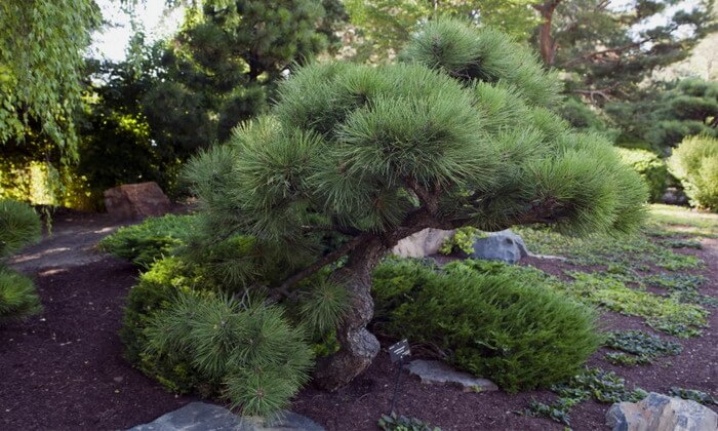
- Korean cedar pines are very fluffy and graceful, adorn the garden plot with their beauty.

For cedar pines, see the next video.



































































The comment was sent successfully.